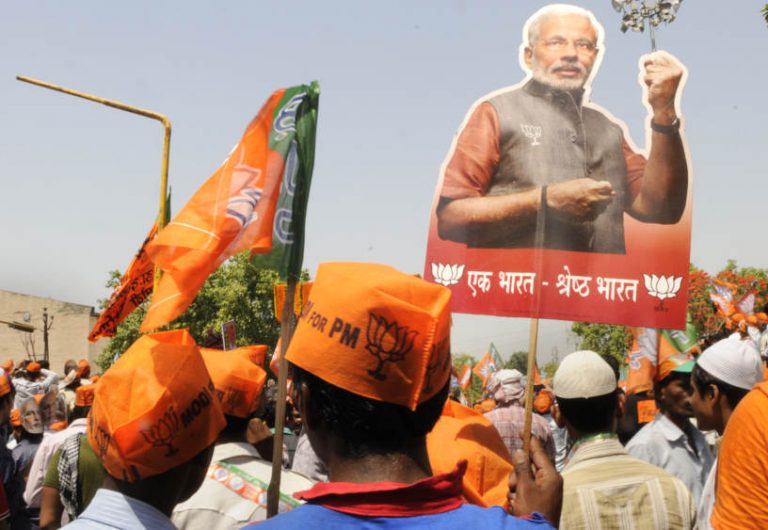Mumbai: The Bharatiya Janata Party (BJP)-led central government’s performance on 30 top concerns for voters–prime among which are better employment opportunities, healthcare facilities and drinking water supply–is rated ‘below average’ according to a late-2018 all-India survey by the Association for Democratic Reforms.

“This indisputably is a result of prevailing governance deficit in these sectors that is causing deprivation to the average Indian voter,” the survey report said. A similar survey by ADR conducted in mid-2017 had found the rating on voters’ top five concerns ‘above average’.
Carried out between October 2018 and December 2018, the ‘All India Survey On Governance Issues and Voting Behaviour 2018’ covered 534 of 543 Lok Sabha constituencies, with 273,487 participating voters spread across various demographics.
ADR’s report identifies 30 voters’ priorities including drinking water, electricity, roads, food, education, healthcare and public transport, in their respective regions. For assessing this, voters were asked to list their top five concerns.
‘Better employment opportunities’ emerged as the topmost concern for 46.8% of voters, followed by better healthcare (34.6%) and drinking water (30.5%).
These findings are similar to a Pew Research Centre survey conducted in May-July 2018–the beginning of the last year of the Prime Minister Narendra Modi-led NDA government–in which more than 70% of 2,521 respondents identified the lack of employment opportunities and rising prices are India’s most pressing challenges, as IndiaSpend reported on March 26, 2019.
ADR also asked participants to rate the government’s performance on each of the 30 voters’ priorities. A three-level scale of ‘Good’, ‘Average’ and ‘Bad’ was used, where ‘Good’ was given weightage if 5, ‘Average’ was weighted 3 and ‘Bad’ was weighted 1.
The government’s performance on addressing the top three concerns–employment, healthcare and drinking water needs–was rated 2.15, 2.35 and 2.52, respectively, or below average, according to the report. In fact, in all 30 listed issues, across rural and urban areas at the all-India level, the government received a rating below the average score of 3 out of 5.
“It is a matter of serious concern that for none of the 30 listed voters’ priorities, the performance of the government was rated as average or above average,” the report said.
Other issues that featured in the top 10 voter priorities include better roads, better public transport, availability of water for agriculture, agricultural loans, better prices for farm produce, subsidies for seeds and fertilisers, and better law and order.
Source: Association of Democratic Reforms, 2018
This makes it evident that Indian voters prioritise provision of employment and basic amenities such as healthcare, drinking water and better roads over issues such as terrorism and a strong defence/military, the report said.
Of the 30 issues, the government’s performance was rated worst on encroachment on public lands and lakes, terrorism, job-skilling, a strong defence/military, eradication of corruption, lower food prices for consumers and mining/quarrying.
The government’s rank on providing better employment opportunities–voters’ primary concern– stood at 16, behind its performance on providing better healthcare (7th) and drinking water (3rd), the other top concerns.
Source: Association of Democratic Reforms, 2018
Ratings of government performance on top voter concerns has declined since 2017
In a comparative analysis with ADR’s All India Mid-Term Survey 2017, better employment opportunities and better hospitals/primary healthcare centres remained top concerns for voters, the 2018 ADR survey found. Meanwhile, the government’s performance on providing for the voters’ top-five concerns declined to below average in 2018, the report showed.
In 2018, drinking water, better roads and public transport featured in the top five, replacing agricultural loan availability, better law and order, and electricity for agriculture, which featured in 2017.
Voter concern for better employment opportunities in fact grew from 30% in 2017 to 47% in 2018. Rating of the government’s performance on this issue declined from 3.17 on a scale of 5 in 2017 to 2.15 in 2018.
Similarly, voter concern on the need for better healthcare facilities grew from 25% in 2017 to 35% in 2018. Rating of the government’s performance in this regard declined from 3.36 (above average) to 2.35 (below average).
Drinking water as voters’ priority increased from 12% in 2017 to 30% in 2018. The government’s performance rating fell from 2.79 to 2.52.
Source: Association for Democratic Reforms, 2017 and 2018
- The government received a below average ranking, ranging from 1.00 to 2.64 on a scale of 5, on 24 governance issues listed as top priorities of urban voters. On the three top priorities for these voters–better jobs, better healthcare centres and traffic congestion–the government’s performance was ranked 14th, 6th and 11th, respectively. Urban voters rated the government’s performance best on ‘Empowerment of Women and Security’ and worst on ‘Terrorism’.
- On 26 governance issues important to voters in rural areas, the government received a below average rating ranging between 1.02 and 2.67 on a scale of 5. On the three top priorities for these voters–jobs, availability of water and farm loans–the government’s performance was ranked 11th, 10th and 12th, respectively. The government’s best-rated performance was on ‘better public transport’ while its worst rated performance was on ‘training for jobs’.
- Male voters rated the government’s performance highest (2.59) for ‘Empowerment of Women and Security’, however, even this highest rating represents a ‘below average’ score. Women voters rated the government much lower on this parameter, giving it a score of 2.27.
Courtesy: India Spend
